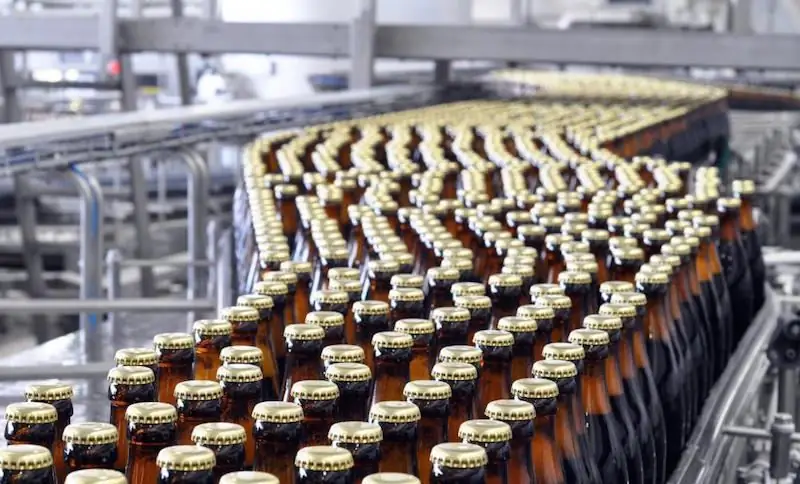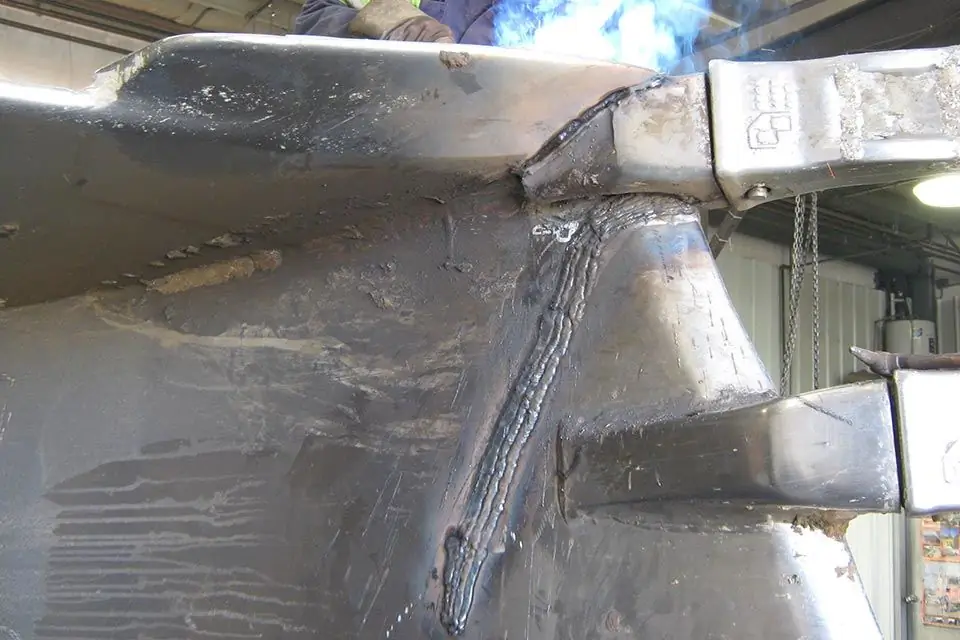2026 Author: Howard Calhoun | [email protected]. Last modified: 2025-01-24 13:10:29
An important moment in the launch of production is the preparation of the enterprise for the release of new products. To this end, systems have been developed in each country to prepare enterprises for the launch of new production lines and the compliance of ongoing technological changes with certain established standards.
What is pre-production at the enterprise (TPP)?
This is a set of measures that ensures the readiness of the enterprise in terms of technology for the release of new products. These are technological, organizational, economic, scientific and design work to launch the production of new products or master the latest technologies.
Technical and technological preparation of production are very important links when launching a new product line. At the same time, the CCI is an integral part of technical training.

At this stage, the company's management determines which technologies and resources will be used to produce new products, andalso calculates the cost of one unit of production.
The result of the CCI is expressed in the readiness of the enterprise to produce products of a certain quality on time, in the required volume and at certain costs. The set of measures and their number depends on the technical and technological equipment of the company, the complexity and purpose of the final products. Technological readiness is a complete set of documents and technical equipment required for the release of new products.
Working with CCI documentation
Working with the documentation of the CCI takes place in 3 stages: development of terms of reference, technical and working draft.
When developing terms of reference, it is necessary to analyze the available organizational and technical means, develop ideas and proposals on the organization, planning and process management procedures.

A technical project is a general step-by-step scheme for preparing the production process, the readiness of all services to launch new products into production, the development of the main provisions for the organization of work, the reduction to common standards of documentation (document forms), the development of terms of reference for the automation of the main units CCI.
A working draft is an information component of the CCI: job descriptions, general provisions, documents and standardization of production processes, preparation and commissioning of documentation for solving computer problems.
Technological processes at the enterprise (TP)
TP is a set of methods for releasing a product by changing itconstruction, condition, properties, shape, dimensions taken for the use of raw materials, materials and/or blanks.
Preparation for the Chamber of Commerce and Industry is carried out in two directions: as part of the introduction of new products and in order to improve the existing production process, which will not be associated with changes in the design of manufactured products. In each direction, their tasks are solved and a certain list of works is carried out. It all depends on the products being manufactured and the manufacturing process chosen.

For the development of technological processes at the enterprise there is a special service - the department of the chief technologist. These works are carried out for the manufacture or repair of those products that have already been tested for manufacturability.
Manufacturability
This is a number of product design parameters that are checked for the possibility of optimizing the cost of labor, materials and time during the CCI, production and use of the product, its repair in comparison with similar indicators of the same type of product while maintaining the specified quality parameters under certain conditions of production, use and repairs.

Information on the level of manufacturability is necessary in order to optimize decisions made at the following stages:
- development of design documentation;
- determining plans for the start of production of a particular product;
- CCI analysis;
- development of an action plan to improve the level of manufacturability and efficiency of production and operationproducts.
The indicators that are involved in assessing the manufacturability of a structure include:
- labor intensity;
- specific material consumption;
- cost;
- terms of technical support.
When evaluating manufacturability, it is recommended to use the minimum sufficient set of indicators. Evaluation methodology and indicators, as well as quantitative results are determined depending on the product:
- her kind;
- degrees of novelty;
- complexity and production conditions;
- maintenance and repair;
- planned volumes of produced batches;
- future prospects;
- production type;
- level of development of the production process of product design.
Checking the design of manufactured products for manufacturability should answer a number of the following questions:
- Reduce production costs and labor.
- Reduce maintenance costs and labor.
- Reducing the material intensity of production - the amount of spent metal, fuel, energy resources, as well as installation and repair at the customer's site.
Reducing cost and labor
This is facilitated by the introduction of new products into serial production by standardizing and unifying production and other processes, reducing the range of structural components and materials used, introducing highly efficient and low-waste technologies, standardizing the technical equipment of the organization,development of the most optimal level of mechanization and automation.
Reducing material consumption
Work to reduce the material consumption of manufactured products can be divided into the following components:
- use of the most suitable brands and types of materials, options for obtaining the most effective blanks, ways to increase the strength of individual components of the structure;
- the use of modern and most effective solutions that are aimed at increasing the resource of manufactured products, as well as the use of waste-free and / or low-waste technological processes;
- Use intelligent product layout to reduce material costs.
During the CCI, two types of design manufacturability are distinguished:
- Production - designed to reduce the time and material costs of preparation, and the time frame of the production cycle.
- Operational - necessary to reduce time and material costs for maintenance and repair of products.
Evaluation of the manufacturability of the design of the finished product occurs according to two types of characteristics: qualitative and quantitative.
Purpose of the CCI
Technologies and their processes are developed for the production of each specific product, and for the manufacture of products that have become traditional for the organization. The purpose of the technological preparation of production is to increase the technical level of the organization and goods, reduce the cost of production, and also improve working conditions.for staff. The CCI is used as part of measures to protect the environment from the consequences of production.

Tasks of the CCI
The following pre-production tasks need to be completed:
- Conduct a manufacturability analysis of new manufactured products.
- Conduct an analysis of existing technologies, equipment fleet, production lines and production capacity at the enterprise.
- Conduct an analysis of the technological processes used and adjust existing or develop new technologies for the production of products.
- Introduce non-standard technological equipment and tools for the organization.
- Define norms for various types of material and technical resources.
- Design and implement, if necessary, new production sites.
- Conclude agreements with new suppliers of necessary resources.
- Define production process standards.
- Develop plans for the release of new products, as well as for the operational management of the CCI.
Stages of CCI
There are 3 main stages of technological preparation of production:
- Developing a prototype production program.
- Preparation of the enterprise for the production of a pilot batch.
- Preparation and support for the release of new products on an industrial scale.
Any CCI begins with the definition of route technology - that is, the sequence of operations performed and implementation in workby workshops for each specific group of equipment. Along with this, there is a choice of tools and technical equipment, calculations of temporary norms and the establishment of the category of work performed to determine the speci alty and skill level of personnel.

In individual and small-scale production, as well as in enterprises with relatively simple technology development methods, the CCI is limited to the development of route technology (MT). Operational ones are also being worked out at large enterprises.
When considering options for MT, the most optimal one is selected by comparing all indicators and comparing the cost of the final product, work carried out at different stages of production and maintenance. That is, typical technical processes are defined, which, in turn, are designed to reduce the number of technological operations and establish unified methods of production, processing of identical products, which leads to cost reduction.
To develop new processes at the enterprise, it is necessary to go through a number of the following stages, which will form the basis for organizing the technological preparation of production:
- determine the technological route for the processing of manufactured products of a certain group;
- choose step-by-step process (if necessary);
- determine and implement ways to process individual components of products.
At the Chamber of Commerce, it is also necessary to study projects, produce and adjust equipment and technical equipment. This is a rather complex, labor- and resource-intensive work. On thelarge enterprises with technologically complex production, the launch of a new product is accompanied by reconstruction and re-equipment with new equipment and technologies.
When conducting the Chamber of Commerce, it is necessary to take into account the material and organizational readiness of the company for a new type of product. Material preparation includes the consolidation of resources, the acquisition and launch of new equipment and production lines, the production and / or acquisition of new tools and other technical means, as well as raw materials, materials, blanks and much more. Simply put, the material and technical equipment of the organization with all the necessary resources to start the production of new products. Organizational preparation of an enterprise is an increase in the efficiency of labor and production processes, as well as the adaptation of all services for the release of new products, the use of technologies and equipment.
ESTPP
In the structure of the standards of technological preparation of production, it is worth noting the interstate standards of the CCI, such as:
- SRPP - a system for the development and production of products.
- ESKD - a unified system of design documentation.
- ESTD - a unified system of technological documentation.
- CAD - computer-aided design system.
A special place among these CCI standards is given to the standardization of technical documentation.
Management of technological preparation of production occurs just by following the developed, generalized unified standards and rules, as well as other regulatorydocuments.
Effective standardization is achieved by the following methods:
- Reducing and eliminating the cost of reissuing documents in the process of transferring them to other organizations and enterprises.
- Reduction of text and graphic documents to simpler forms, corresponding to this procedure, reduction of costs for their preparation and application.
- Introduction of unified documents and workflow, expansion of their use in the design process, development of new technological solutions, preparation and implementation of equipment, tools, technical equipment.
- Modern methods of accounting for computer technology, which is used in the manufacture and processing of the entire flow of documents of the organization.
- Working on improving the quality of technical documentation developments.

The Unified System for Technological Preparation of Production (ESTPP) is a system for organizing and managing the CCI process, defined by state standards, which provides for the use of modern technologies, technological equipment with the necessary equipment, means of mechanization and automation of production processes, management and engineering processes.
ESTPP is a generally accepted backbone approach for enterprises to determine the methods and means of CCI, their application, as well as to the development of technologies for the production of finished products in the shortest possible time, with low material and labor costs at each stage, including test samples. itleads to the creation of flexible production, which will allow continuous improvement of technical processes or quickly readjust them for the production of new types of products.
The complex of a unified system of technological preparation of production is divided into 5 components:
- Group 1 (preparatory): general standards, terms, basic requirements, procedure for assessing the CCI.
- Group 2: enterprise standards - include the rules of the enterprise and the rules for the management of the CCI, the stages of developing documentation, the formation of organizational structures for the enterprise, automation, the rules for organizing the economic and organizational activities of the enterprise.
- Group 3: product standards - determine the manufacturability of the manufactured product as a whole, by types of manufactured products, development stages, indicators of manufacturability of production and the procedure for selecting these indicators, the procedure for implementing control of design documentation.
- Group 4: standards of production processes - the procedure for the development and implementation of production technologies, means of equipping production with technologies, the selection and implementation of equipment, controls, processes of mechanization and automation of production.
- Group 5: mechanization and automation standards - rules for the use of technical means and mechanization / automation of ongoing work, solving newly emerging problems, information, mathematical and technical equipment, defining objects and the queue for implementing automation and solving tasks.
Recommended:
Innovation management: essence, organization, development, methods, goals and objectives

Since the birth of the concept of management and its theoretical schools in business, the following trend has been observed: any successful entrepreneur has achieved success by releasing such a product that no one has offered before him. It is an exceptional and unique product that solves human problems and provides a reason for emulation. Activities for the introduction of new products are called "innovation management"
Advertising agency: how to open, where to start, preparation of necessary documents, drawing up a business plan, goals, objectives and stages of development

Demand for advertising services is strong throughout the year, regardless of the fact that the market is represented by a huge number of companies offering such services. Therefore, when planning how to open an advertising agency, special attention should be paid to market analysis. This will allow you to assess the real prospects of the niche, as well as create an effective business model with high profitability
Inline production is Concept, definition, methods of organization and technological process

The production process is a complex technological action that can be organized in different ways and means. The work of an enterprise in the conditions of in-line production of products is today considered the most efficient, but at the same time demanding in terms of labor, organizational and material costs. In a general sense, in-line production is a format of production activity in which the principles of rhythm and repeatability of operations come to the fore
Commodity science: methods of goals and objectives

Thanks to modern methods of commodity research, its main tasks are solved. Commodity research methods help to look for ways to improve the quality of goods, conduct an examination, choose the optimal modes of operation, packaging and transportation. In other words, to do everything that requires commodity science as a science and an economic tool
Restoration of parts by welding and surfacing: methods and methods of restoration, features, technological process

Welding and surfacing technologies allow efficient restoration of metal parts, providing a high degree of reliability and durability of the product. This is confirmed by the practice of using these methods when performing repair operations in a variety of areas - from car repairs to the production of rolled metal. In the total amount of work on the repair of metal structures, the restoration of parts by welding and surfacing takes about 60-70%

